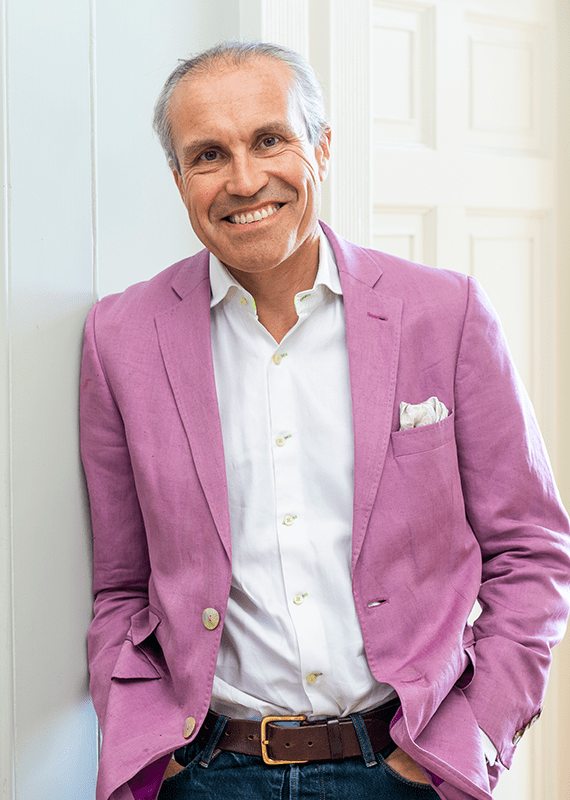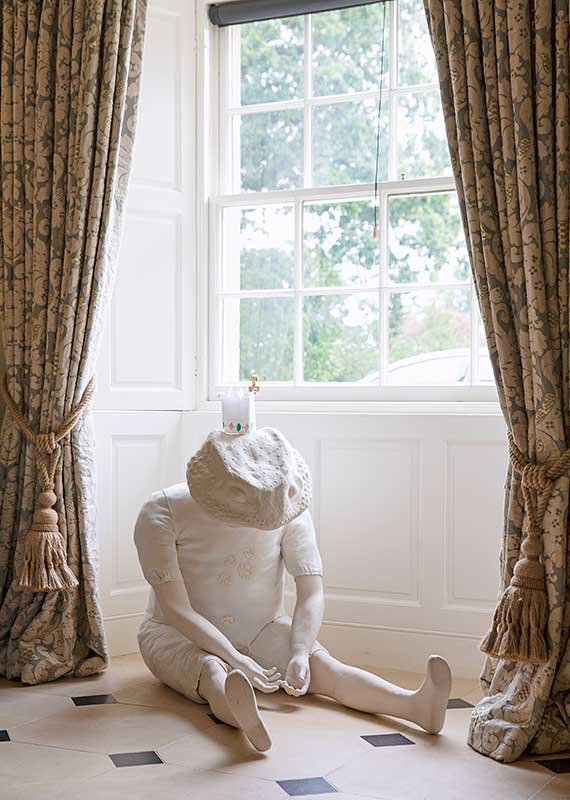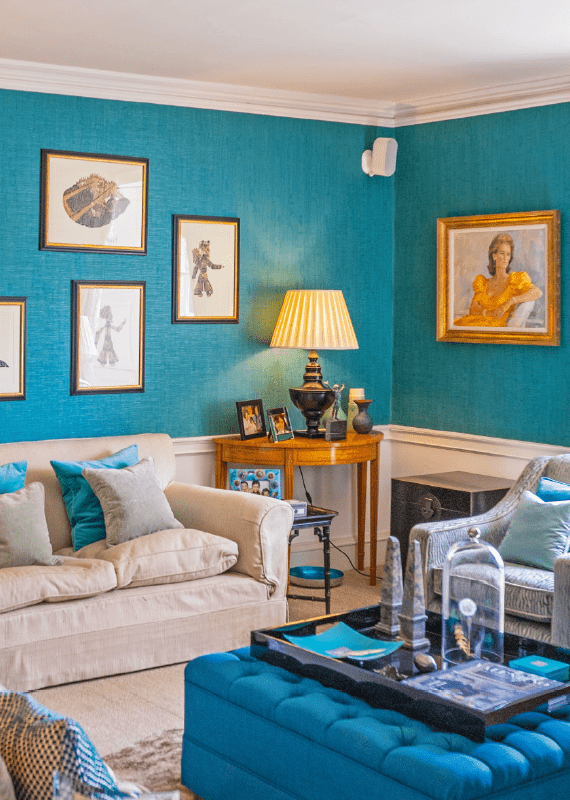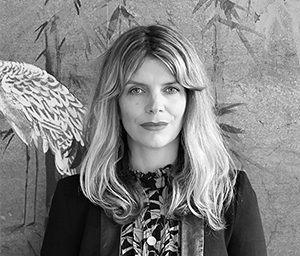The Affordable Art Fair founder shows us around his (naturally) art-filled historic home.

Stepping into Will Ramsay’s 18th-century mansion, you cannot help but feel immediately captivated by the blend of old-world charm and contemporary flair that defines his home. The Georgian architecture, with its grand proportions and timeless elegance, sets the stage for what is clearly a labour of love – a space where history and modernity, art and family life merge. Will explains that the house, built in 1785, was bought by his grandparents, Admiral Sir Bertram Ramsay and Margaret, daughter of John Menzies the bookseller, in 1938. “My parents moved in 1973, and in 2013, I moved in with my family,” he says.
When Will and his wife took over, the house was in good repair, but it was a little constrained by its numerous small rooms, a common feature of properties from that era. “We redesigned the layout, removing unnecessary rooms and adding a grand spiralling staircase that links the four floors,” he says. “We filled the house with artworks and curiosities, really putting our stamp on the place, whilst ensuring we were appropriately elevating the property’s beauty.” The renovation became a careful balancing act, honouring the house’s historic architecture while also transforming it into a space with bags of personality – and some brilliantly eccentric contemporary touches.

Will’s journey into the art world began at a young age, and his collection reflects decades of careful curation and a deep appreciation for quality. “I bought my first piece in Moscow at 19,” he tells me. “A painting of three Russian men drinking vodka that reminded me of Lucian Freud’s work. Since then, I’ve visited hundreds of galleries, auctions, and art fairs, refining my taste and appreciating quality art.” Each work in Will’s collection tells a story, not just about the artist or the piece itself, but about the moments and memories that have shaped his life. “Bringing these pieces together from around the world into one home is truly special,” he tells me.
But Will’s passion for art extends far beyond his personal collection. In 1996, he launched Will’s Art Warehouse with the aim of making art more accessible to all. “Many people feel intimidated by galleries, thinking they need extensive knowledge to buy art,” he explains. This realisation led to the creation of the Affordable Art Fair in 1999, an event designed to break down exactly these barriers and encourage a wider audience to enjoy and own original contemporary art. And Will’s mission is simple yet profound: art should be for everyone, not just the elite. His advice to new collectors is refreshingly straightforward. “Buy what you like, not what you think you should like; it’s you that’s looking at it,” he says, and if you’re unsure? “Sleep on it – if you’re still thinking about it in the morning, it’s worth returning to.” It’s advice that’s both practical and empowering, and it is rooted in a deep understanding of the emotional connection that art can evoke.
I am struck by the effortless way Will has blended old and new, not just within his art collection, but throughout the entire décor of the house. “I use colour as a base, rather than sticking to what’s expected,” he tells me. “We have video art in a dining room full of classic portraiture, and contemporary art in a brightly painted library full of old books… Fabrics can also help meld old and new, blending the furniture and spaces with both old and new elements,” he explains.

The Georgian bones of the mansion play a significant role in how Will displays his art, too. “The geometry of the house encourages us to use symmetry in both art and furniture. Art pieces are often flanked by pairs of lamps, chairs, or candlesticks to draw attention to them. We’re lucky to have high ceilings and large windows that bring in bags of natural light, which is ideal for displaying art.”
It’s clear that Will’s approach to interior design is guided by the art, rather than the other way around. “We position furniture to complement the artwork,” he confirms. “I love recovering and reviving antique furniture to ensure it matches the art. For instance, we’ve re-covered antique chairs in hot pink textiles, and reworked seating areas in complementary colours across other rooms to create a cohesive look,” he says. This philosophy has given him a home that’s both connected and thoughtfully curated, with each piece of furniture playing a supporting role to the artwork that surrounds it.
The house isn’t just filled with paintings and prints – sculpture plays a significant role, too. Will’s garden, in particular, is home to several striking pieces. “I love the Give Us A Smile Love sculpture by Ren Aldridge in our garden, commissioned from the Affordable Art Fair in 2014. Another favourite is The Frog Prince by Kate Williamson from the same year’s Recent Grads Show. My third favourite is a painted pistachio I bought for one Euro on holiday – the most affordable art piece of all,” he says, relishing the eclectic mix of high and low, traditional and contemporary, that defines his collection.

Inspired to crack on with my own collection, I’m keen to find out more about this month’s Affordable Art Fair. What can visitors expect? “The anniversary edition will celebrate the best in contemporary art, all under £7,500, and bringing over 100 leading galleries together from across the world at its founding location of Battersea Park,” Will explains. “Visitors can also expect returning favourites like Family Morning and the Recent Graduates Exhibition, showcasing the best emerging talent with an exciting Class of 2024 artist line up.”
I wonder if Will might share some practical advice for those looking to create their own art-filled spaces. “Hang art at eye level – put the middle of the piece at the average eye level. If you don’t have a single large piece for a wall, consider a gallery hang. Avoid placing watercolours or colour photographs in direct light, as they will fade. Let the artwork be the dominant colour, and don’t use bright frames or mounts,” he advises, and the tips are duly lapped up and noted.
For someone who lives, sleeps and breathes art, my final question to Will is admittedly a bit mean. But I want to know, in the case of an alien invasion, which three pieces in his private collection would he grab and save? “I’d save a photograph of James Dean in Tibet by Barry Cawston, Louise Bourgeois’ Frail hand touching sheet music and, of course, our family portrait commissioned in 2018 by Maisie Broadhead, based on a Zoffany group portrait – with a modern twist.” It’s almost as if he’s thought about this before.

